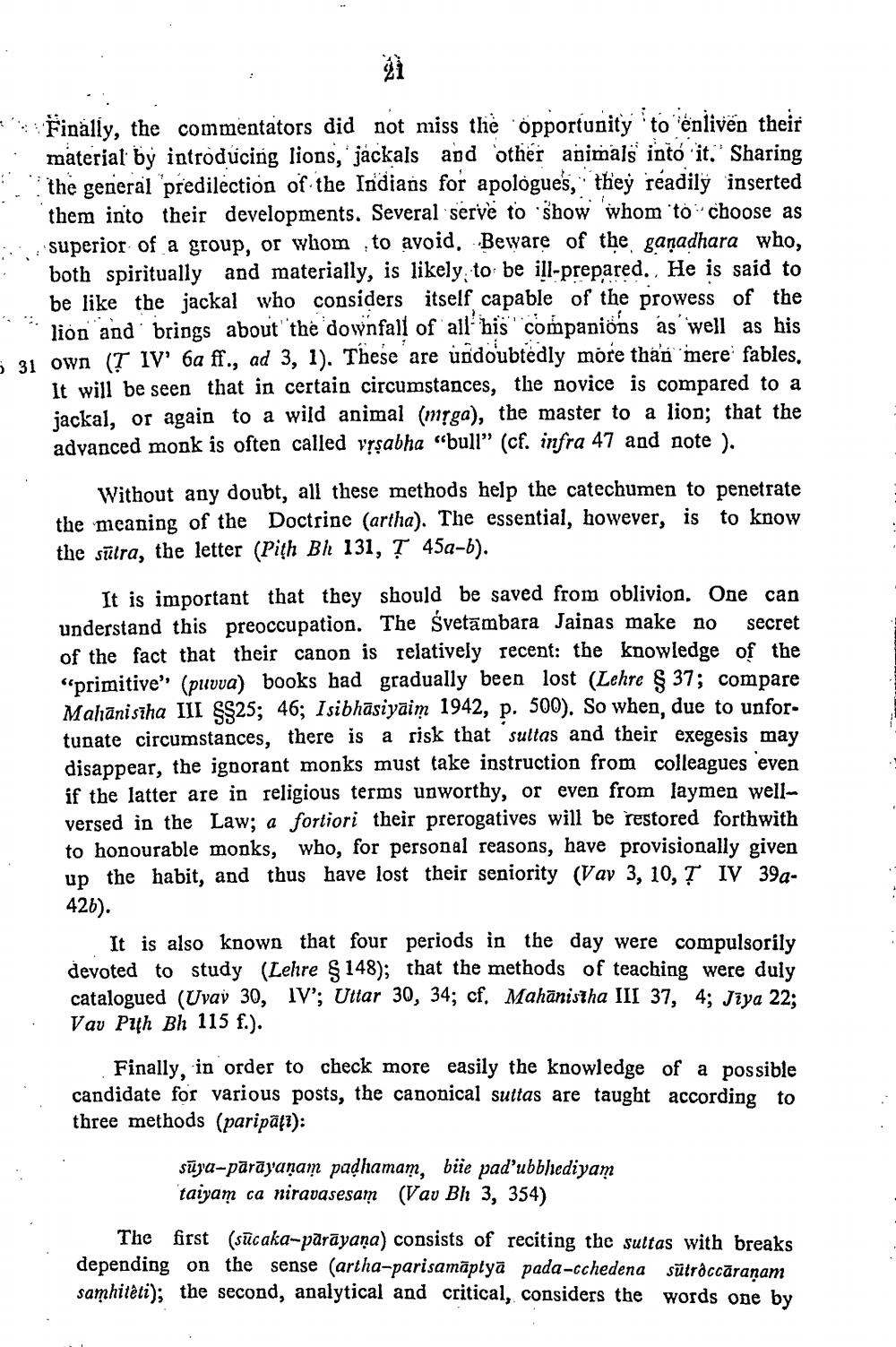________________
3. Finally, the commentators did not miss the opportunity to enliven their
material by introducing lions, jackals and other animals into it." Sharing the general predilection of the Indians for apologues," they readily inserted them into their developments. Several serve to show whom to choose as
Superior of a group, or whom to avoid. Beware of the gañadhara who, • both spiritually and materially, is likely to be ill-prepared. He is said to
be like the jackal who considers itself capable of the prowess of the * lion and brings about the downfall of all his companions as well as his į 31 own (T IV 6a ff., ad 3, 1). These are undoubtedly more than mere fables,
It will be seen that in certain circumstances, the novice is compared to a jackal, or again to a wild animal (
mga), the master to a lion; that the advanced monk is often called vşşabha "bull" (cf. infra 47 and note ).
Without any doubt, all these methods help the catechumen to penetrate the meaning of the Doctrine (artha). The essential, however, is to know the sūtra, the letter (Pith Bl 131, Ţ 45a-b).
It is important that they should be saved from oblivion. One can understand this preoccupation. The svetāmbara Jainas make no secret of the fact that their canon is relatively recent: the knowledge of the “primitive' (puvva) books had gradually been lost (Lehre § 37; compare Malıānisīha III SS25; 46; Isibhāsiyāim 1942, p. 500). So when, due to unfor. tunate circumstances, there is a risk that sultas and their exegesis may disappear, the ignorant monks must take instruction from colleagues even if the latter are in religious terms unworthy, or even from laymen wellversed in the Law; a fortiori their prerogatives will be restored forthwith to honourable monks, who, for personal reasons, have provisionally given up the habit, and thus have lost their seniority (Vav 3, 10, ? IV 39a
426).
It is also known that four periods in the day were compulsorily devoted to study (Lehre § 148); that the methods of teaching were duly catalogued (Uvav 30, IV; Uttar 30, 34; cf. Mahānistha III 37, 4; Jiya 22; Vav Puh Bh 115 f.).
Finally, in order to check more easily the knowledge of a possible candidate for various posts, the canonical suttas are taught according to three methods (paripați):
süja-pārāyaṇam padhamam, biie pad'ubbliediyam taiyam ca niravasesam (Vav Bh 3, 354)
The first (sūcaka-pārāyana) consists of reciting the sultas with breaks depending on the sense (artha-parisamāptyä pada-cchedena sütrəccāranam samhitêti); the second, analytical and critical, considers the words one by




